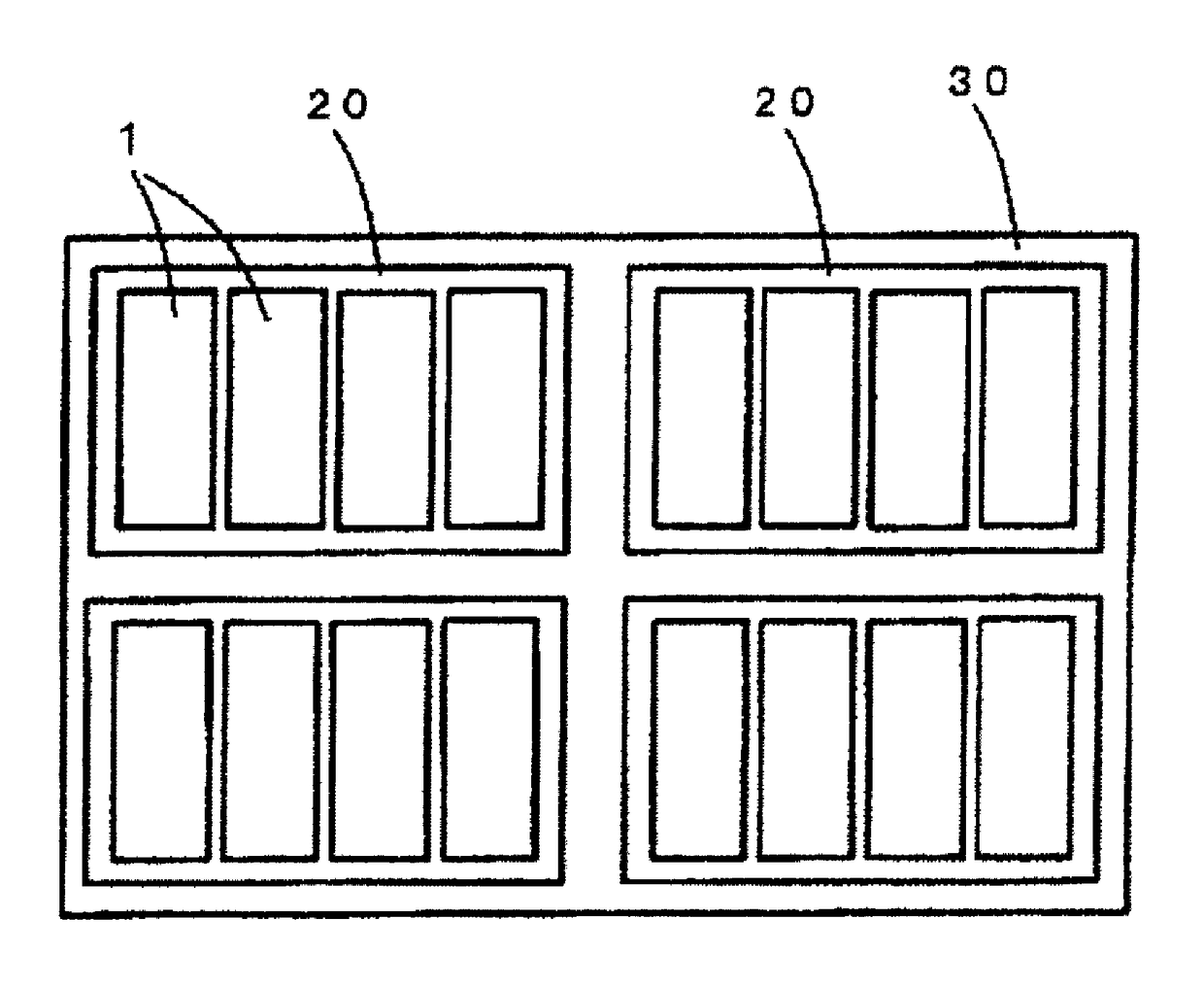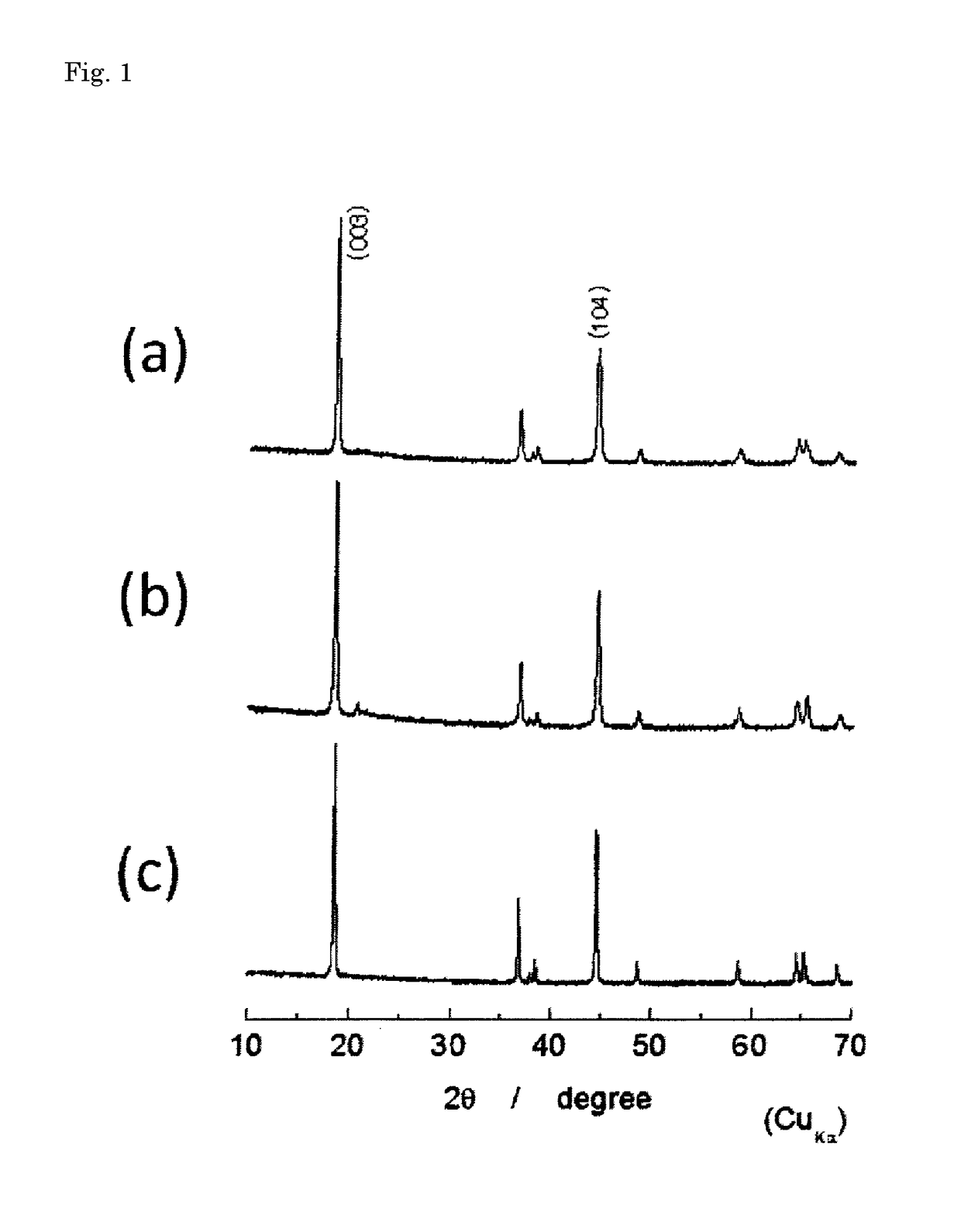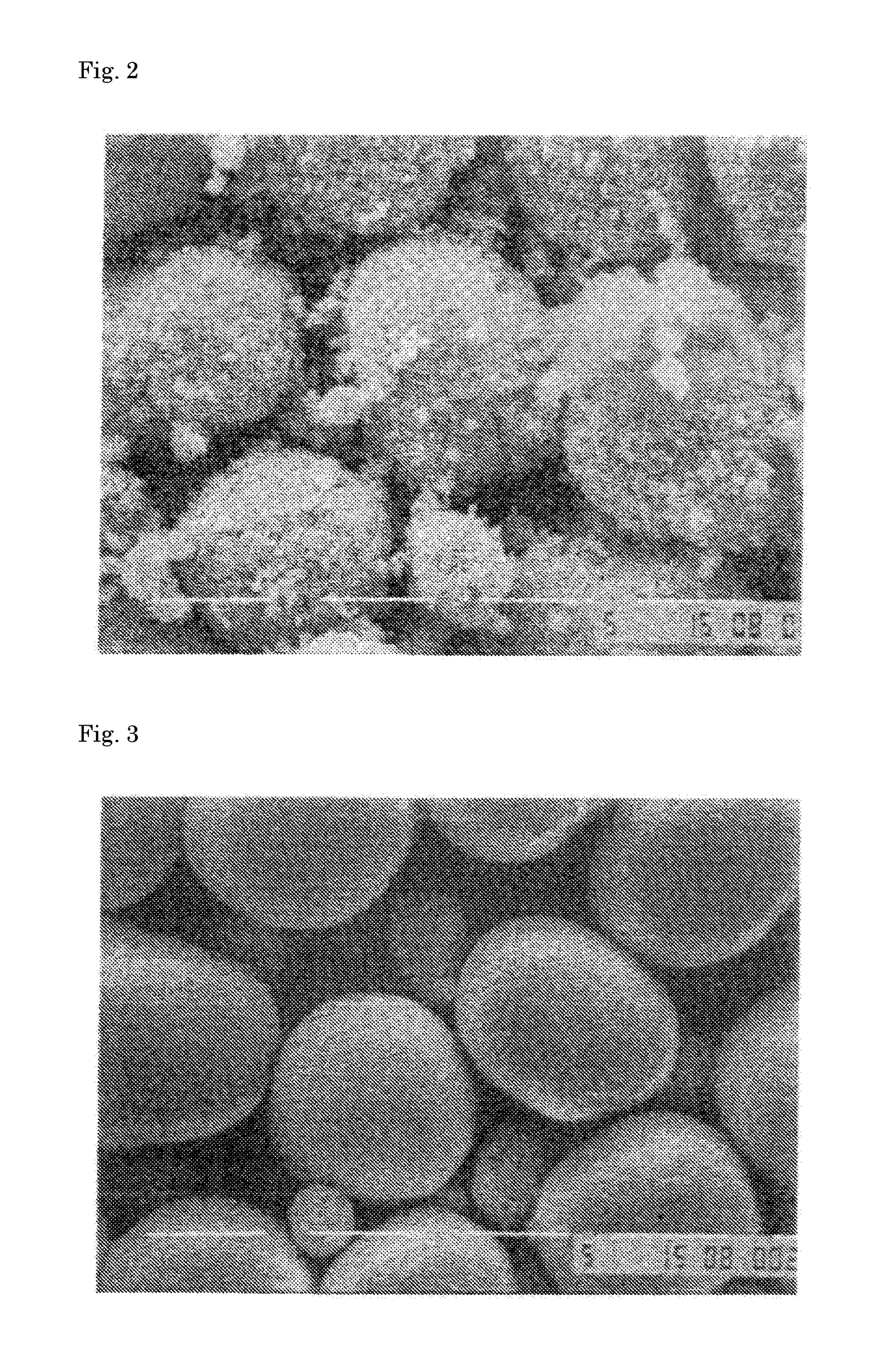Positive active material for nonaqueous electrolyte secondary battery, method for producing same, electrode for nonaqueous electrolyte secondary battery, and nonaqueous electrolyte secondary battery
a nonaqueous electrolyte and active material technology, applied in the direction of active material electrodes, positive electrodes, cell components, etc., can solve the problems of poor charge-discharge cycle performance and maintain crystal structure, and achieve the effect of large discharge capacity
- Summary
- Abstract
- Description
- Claims
- Application Information
AI Technical Summary
Benefits of technology
Problems solved by technology
Method used
Image
Examples
example 1
[0114]In preparation of an active material of an example, a hydroxide precursor was prepared using a reaction crystallization method. First, nickel sulfate hexahydrate (505.6 g), cobalt sulfate heptahydrate (112.6 g) and manganese sulfate pentahydrate (405.7 g) were weighed, and totally dissolved in 4 L of ion-exchange water to prepare a 1.0 M sulfate aqueous solution of which the molar ratio of Co:Ni:Mn was 48:10:42. Next, 2 L of ion exchange water was poured into a 5 L reaction tank, and an Ar gas was bubbled for 30 min to remove oxygen contained in the ion-exchange water. The temperature of the reaction tank was set at 50° C. (±2° C.), and the reaction layer was set so as to have a sufficient convection therein while the contents in the reaction tank was stirred at a rotation speed of 1500 rpm using a paddle impeller equipped with a stirring motor. The sulfate aqueous solution was added dropwise to the reaction tank at a rate of 1.5 ml / min for 44 hr. Here, during a time period be...
example 2
[0117]Except that a hydroxide precursor was prepared in such a manner that the molar ratio of Ni:Co:Mn was 45:10:45, the same procedure as in Example 1 was carried out to prepare a lithium transition metal composite oxide according to Example 2.
example 3
[0118]Except that a hydroxide precursor was prepared in such a manner that the molar ratio of Ni:Co:Mn was 42:10:48, the same procedure as in Example 1 was carried out to prepare a lithium transition metal composite oxide according to Example 3.
PUM
| Property | Measurement | Unit |
|---|---|---|
| molar ratio | aaaaa | aaaaa |
| molar ratio | aaaaa | aaaaa |
| molar ratio | aaaaa | aaaaa |
Abstract
Description
Claims
Application Information
 Login to View More
Login to View More - R&D
- Intellectual Property
- Life Sciences
- Materials
- Tech Scout
- Unparalleled Data Quality
- Higher Quality Content
- 60% Fewer Hallucinations
Browse by: Latest US Patents, China's latest patents, Technical Efficacy Thesaurus, Application Domain, Technology Topic, Popular Technical Reports.
© 2025 PatSnap. All rights reserved.Legal|Privacy policy|Modern Slavery Act Transparency Statement|Sitemap|About US| Contact US: help@patsnap.com



